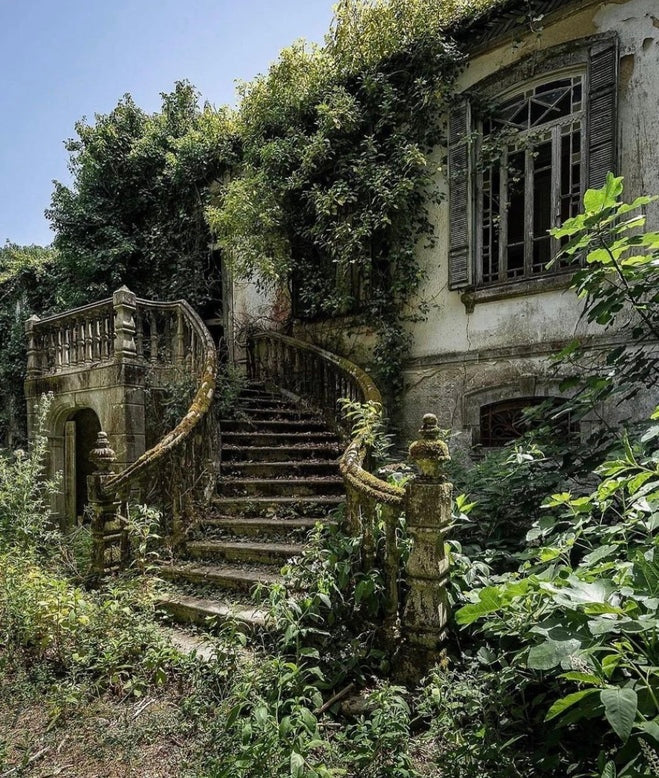Discover the Top 10 Abandoned Places in Detroit: explore eerie, historic locations perfect for urbex enthusiasts and lovers of mystery.
Detroit, once a thriving industrial powerhouse, has seen its share of decline in recent decades. The city's population dwindled, and with it came an array of abandoned places that tell the story of its rise and fall. From grand theaters and schools to massive industrial sites, Detroit’s abandoned locations are hauntingly beautiful reminders of its history. Here are 10 of the most captivating abandoned places in Detroit for urban explorers and history enthusiasts alike.
1. Michigan Central Station
One of Detroit's most iconic abandoned buildings, Michigan Central Station was once the largest rail station in the world when it opened in 1913. After decades of decline, the station closed in 1988 and sat abandoned for years. The towering Beaux-Arts structure became a symbol of Detroit’s downfall, with its decaying grand hall and broken windows. Although restoration efforts have begun, much of the building remains in a state of haunting decay.
2. Packard Automotive Plant
The Packard Automotive Plant is one of the largest abandoned industrial complexes in the world. Once a hub for luxury automobile manufacturing, the plant closed in 1958 and has been left to decay ever since. The sprawling 40-acre site is filled with rusting machinery, broken windows, and graffiti-covered walls, making it a hotspot for urban explorers. Its industrial ruin has also made it a popular location for film shoots and photography.
3. The Lee Plaza Hotel
Built in 1929, the Lee Plaza Hotel was once a luxury high-rise for Detroit’s wealthy residents. It closed in the 1990s, and the once opulent building was left to decay. Today, the building is an empty shell of its former glory, with crumbling plaster, broken chandeliers, and graffiti-covered walls. Efforts to restore the building have been made, but it still stands as a haunting relic of Detroit’s economic decline.
4. St. Agnes Church
St. Agnes Church was built in 1924 and served as a central place of worship for Detroit’s west side for decades. The church was abandoned in the 2000s, and today, its grand arches, stained glass windows, and detailed architecture are crumbling. The decaying sanctuary and overgrown surroundings offer a peaceful yet eerie atmosphere, making it one of Detroit’s most visually stunning abandoned places.
5. Fisher Body Plant 21
Fisher Body Plant 21 was once a major site for the production of automobile bodies for General Motors. The plant, which closed in 1984, has since been left to decay. The massive building is filled with rusting industrial equipment, broken windows, and graffiti-covered walls. Its industrial history and sprawling size make it a popular destination for urban explorers interested in Detroit’s automotive past.
6. Detroit Public Schools Book Depository
Once home to the Detroit Public Schools' surplus books and supplies, the Detroit Public Schools Book Depository has been abandoned since a fire gutted the building in the 1980s. Inside, thousands of charred and water-damaged books, desks, and school supplies remain scattered across the building’s floors. The crumbling walls and debris-strewn rooms create a haunting atmosphere, providing a glimpse into the city's educational decline.
7. The Grande Ballroom
The Grande Ballroom was once the heart of Detroit’s music scene in the 1960s, hosting legendary performances by bands like The Who, Led Zeppelin, and The MC5. After falling into disrepair, the building was abandoned in the 1970s. Today, the once vibrant ballroom is a decaying ruin, with its ornate ceiling crumbling and graffiti covering the walls. The building’s rich music history makes it a must-visit for fans of Detroit’s musical heritage.
8. Eastown Theater
The Eastown Theater, built in 1931, was another key player in Detroit’s live music scene. It hosted legendary acts such as The Rolling Stones and The Grateful Dead before it closed in the 1970s. The once grand theater is now in ruins, with its seats torn out, the ceiling collapsed, and nature slowly reclaiming the space. The Eastown’s decaying interior and storied past make it one of Detroit’s most haunting abandoned places.
9. Belle Isle Zoo
Located on Belle Isle, an island park in the Detroit River, the Belle Isle Zoo was once a popular attraction for families. It closed in 2002 due to budget cuts, and much of the zoo’s infrastructure has been left to decay. The overgrown animal enclosures and rusting gates give the zoo an eerie, post-apocalyptic feel, making it a unique and somewhat surreal exploration spot within the city.
10. William Livingstone House (a.k.a. "The Slumpy Mansion")
Built in 1893, the William Livingstone House was a grand Victorian home in Detroit’s Brush Park neighborhood. Over the years, the neighborhood fell into decline, and the house was left abandoned. Its iconic, slumping facade earned it the nickname “The Slumpy Mansion,” as its deteriorating structure gave it a hauntingly beautiful, almost melting appearance. The house has since been demolished, but its legacy as one of Detroit’s most photogenic ruins remains.
Discover the best abandoned places with our maps !
Are you looking for the best urbex locations near you? Look no further! Whether you're a seasoned urban explorer or a curious hobbyist, our maps are full of abandoned places to explore. Discover our Maps !












